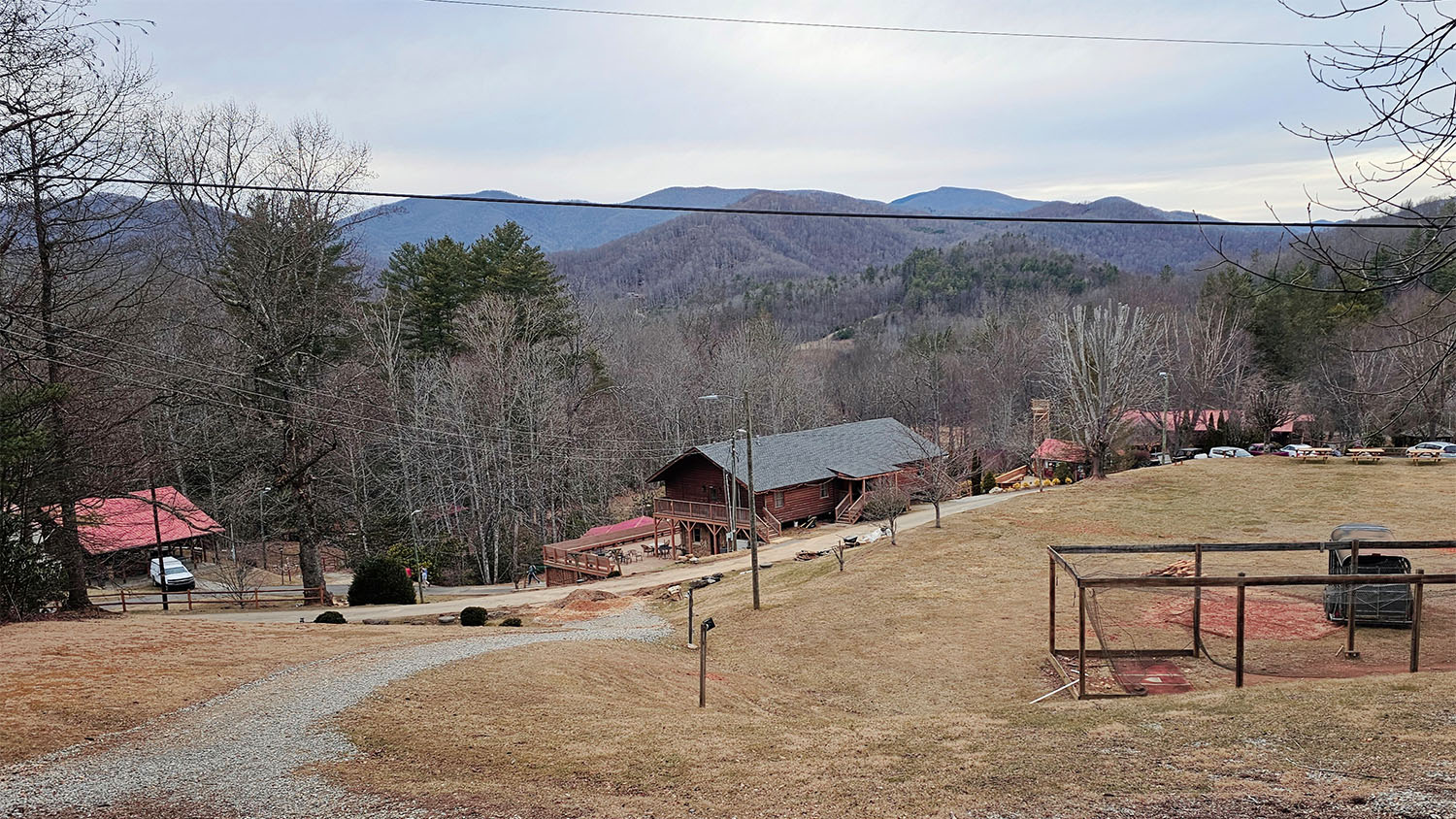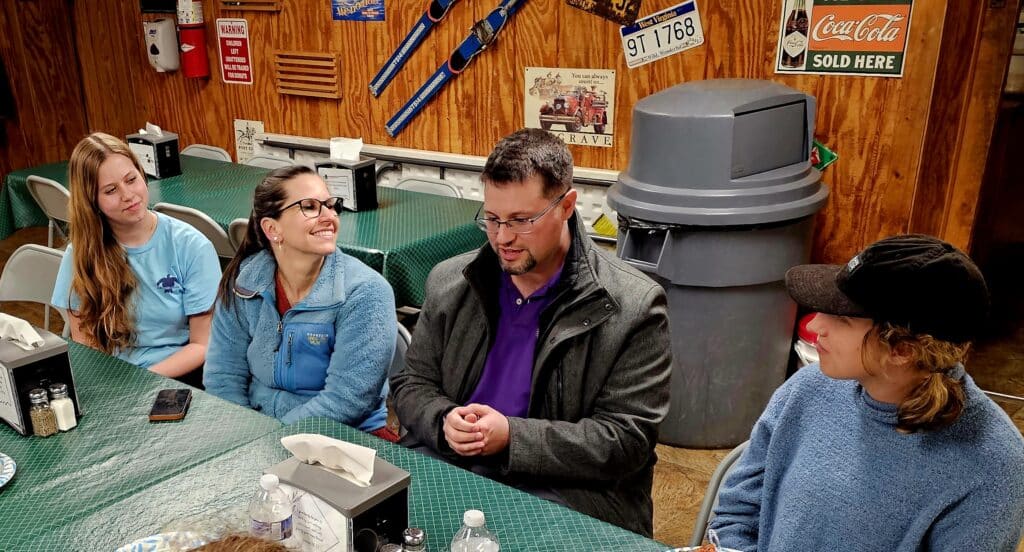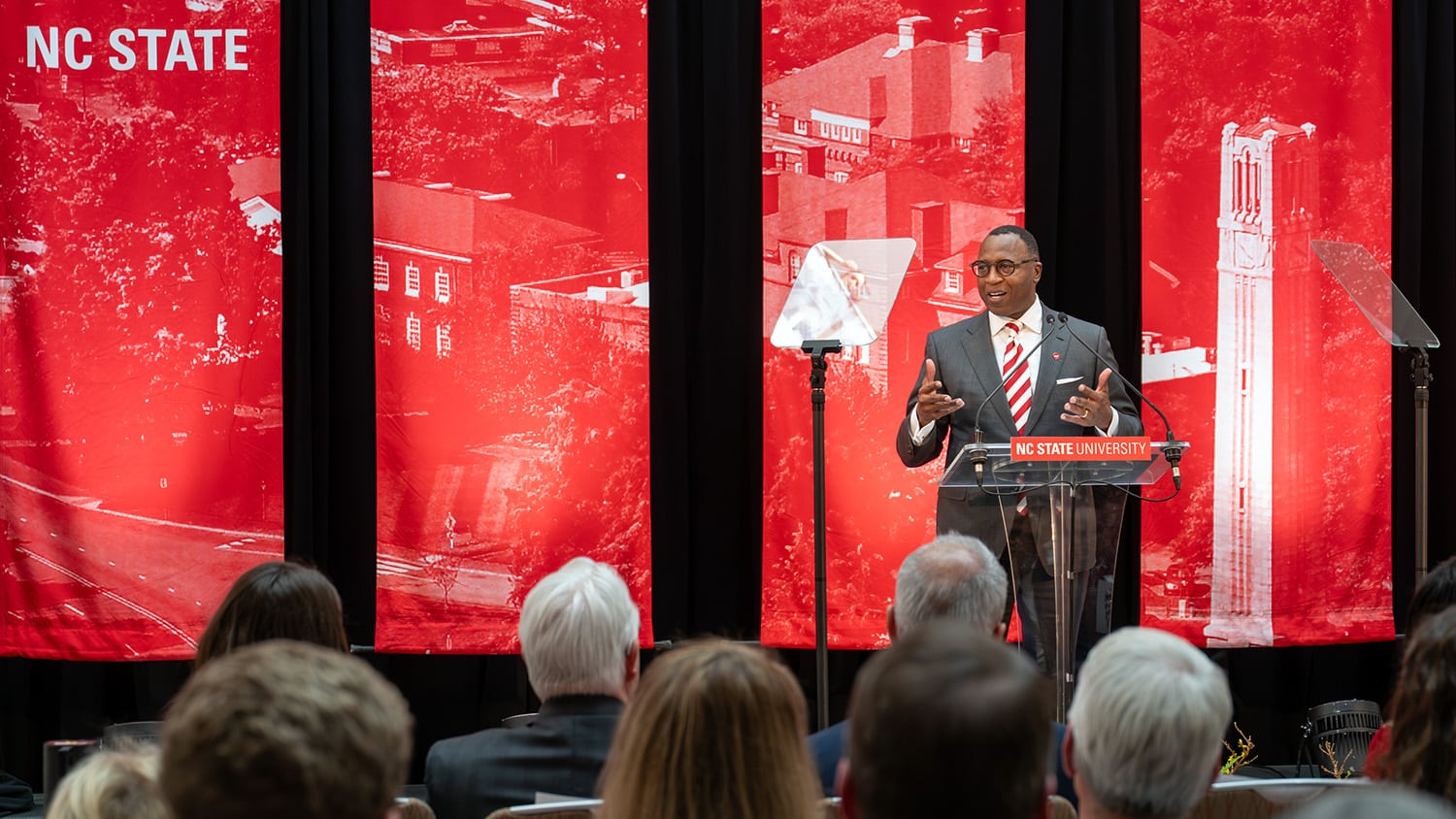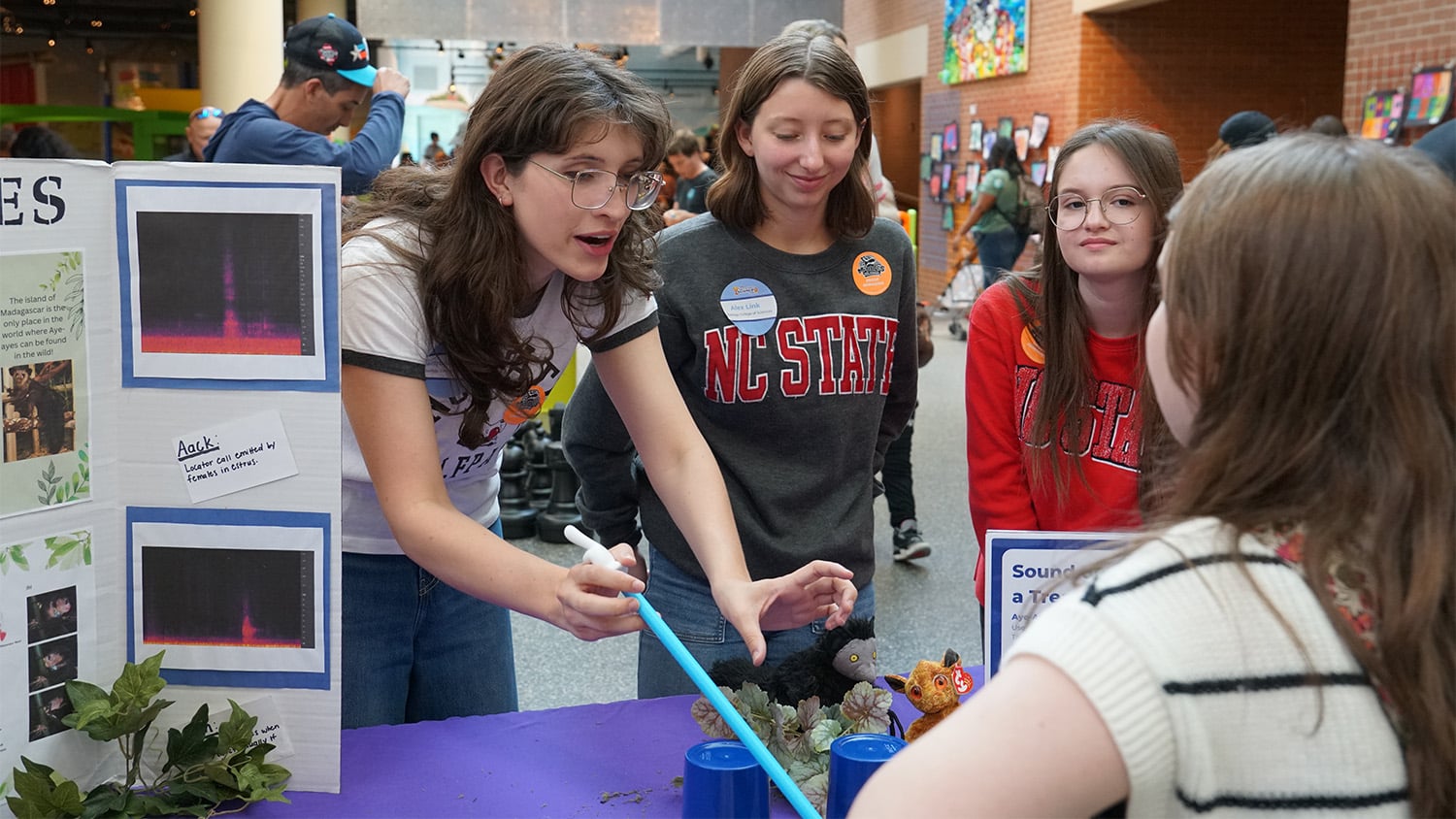A Service-Oriented Spring Break in Western N.C.
A team of five participants, two co-leads and a graduate student advisor are spending their spring break doing hurricane recovery work in western North Carolina. They are among the more than 250 NC State students on 16 Alternative Service Breaks across four continents this week.

PLUMTREE, N.C. — NC State graduates John and Lisa Vance had never organized a service trip for college students before, even though they laid the foundation for their 17-year marriage and family of six children during their own college days, more than two decades ago.
Still, the couple — who met while preparing to go on an Alternative Service Break (ASB) trip to the Dominican Republic — had multiple reasons why they wanted to reengage with the program that first brought them together.
John Vance ’07, a Caldwell Fellow, is a physician in Johnson City, Tennessee, who specializes in general surgery and has done multiple medical service trips in Central America, the Caribbean islands, Africa and the United States. His heart and his parents, however, are in his Avery County hometown of Crossnore (population 143).
Lisa Vance ’06 is a nurse midwife who grew up in Cary before attending NC State and then Duke for nursing school. She has traveled on most of the medical trips her husband has volunteered for over the years.
Their lives changed in 2004 when they signed up for an NC State ASB trip to the Dominican Republic, led by Mike Giancola, then the director of the Center for Student Leadership, Ethics and Public Service (now Student Leadership and Engagement).

John and Lisa met in orientation meetings, worked together on several service trips and were married in 2008. They were even willing to tell their story in an e-Harmony-style promotional video for ASB, which was cringe-inducing news to their 15-year-old daughter when the family met a group of NC State ASB students Sunday night.
Five daughters, one son and many more mission and service trips later, they decided to host a week of service activities this spring, their first ASB activity since their student days.
It’s not what they had planned to do with this week. Originally, they were supposed to be going to Guatemala to take their eldest daughter on her first outreach trip. Then, as the family prepared to go to Southern California on vacation last September, Hurricane Helene ravaged western North Carolina.
“We can’t go to Guatemala,” John told his family. “We have to stay here.
“We have to serve our hometown.”
Avery County was among the hardest hit of the 25 mountain counties that suffered hurricane damage last September, with visible damage still dominating the landscape more than five months later. So the Vances helped organize a trip to John’s home county, partnering with DASA’s Student Leadership and Engagement ASB programs, which for the last quarter century has sent students to all corners of the globe during spring and fall breaks and in the summer months.
This week, 16 teams of approximately 250 NC State students are in 10 countries on four continents to do service work, each designed around a social issue pertinent to that area. The Vances knew from their previous travels and their local knowledge the importance of service and recovery work in mostly rural areas and the critical need for community engagement in a Tier 2 economically distressed area.
“The thing we first saw on our trip to the Dominican Republic, they didn’t have a lot of material wealth, but their relational wealth was incredible,” says John Vance, who most recently traveled on a weeklong medical mission with his wife to Kenya. “That’s what this group will see here in the North Carolina mountains.
“There is an enormous amount of relational wealth in an area that doesn’t have as much material wealth.”
The work the students are doing is both needed and appreciated.
“You guys are the answer to a prayer because we knew from our student experience that NC State has a heart for service,” John told the students when he met them. “We need people to participate in recovery efforts.
“You guys are our people.”
This week’s work will include debris removal from a local summer camp, donation sorting at a local charity and stocking a local food pantry.
You guys are the answer to a prayer because we knew from our student experience that NC State has a heart for service.
The group is staying at Teen Valley Ranch, a nondenominational Christian summer camp on the north side of the mountains that sustained virtually no damage during the storm. It has opened its 147-acre camp for groups doing recovery work in the mountains for weeklong stays at no cost.
In the two weeks after the storm, TVR fed up to 600 local residents per day who lacked electricity, water and heat. Charlotte television station WBTV told the area’s story in the five-part documentary “The Day the Lights Went Out.”
With NC State’s team is a 50-member group of college students from five schools in the U.S. and Canada doing similar recovery work in the area, organized by the Minnesota-based Praying Pelican Missions, which leads mission and disaster-relief trips on four continents.
- Categories:


